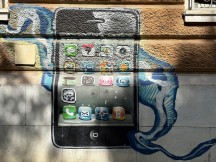Master Your Laptop: Master Your Laptop: Comprehensive Tips for Screenshots, Speed, and Connectivity


The iPhone 16 keeps the awesome main camera setup from the iPhone 15. The main camera features a 48MP sensor with 1/1.56" size, 1.0µm individual pixels, sensor-shift OIS, and a bright f/1.6 lens. The selfie camera is still the same as the iPhone 15, with a 12MP shooter equipped with phase detection autofocus. 😊 The exciting upgrade comes with the new ultrawide camera, which is still a 12MP unit but now has a brighter lens with an f/2.2 aperture. The ultrawide camera also features phase detection autofocus, allowing it to function as a macro camera for close-up shots.
When your iPhone is unlocked, tap once to open the camera and take a photo with another tap. Press and hold to record a video. You can even set it to open the camera with a double click to avoid accidental openings. Once in the camera app, a double light press brings up a menu with options like Exposure, Depth, Zoom, and more. Plus, you can customize the button to open third-party camera
When your iPhone is unlocked, simply click once to open the camera and take a quick photo with another press. You can even set it to open the camera with a double click to avoid accidental activations. If you love using third-party camera apps, you can also set the button to open them.
Hey there! The new iPhone 16 camera comes with an exciting addition called Tone, which enhances the existing Photographic Styles. This feature gives you more control over the HDR processing intensity, addressing a hot topic on the internet.
You'll find two sets of Photographic Styles: Mood and Undertones. Each style allows you to tweak Tone (like contrast or tone curve), Color (saturation), and Palette (similar to a color filter). The Mood styles have preset values for all three parameters (Palette is always at 100), while the Undertone styles only adjust Palette.
It's awesome to see the extra customization for capturing the world around you with your iPhone. However, some may feel that a phone known for its simplicity might not need such elaborate filters. On the other hand, others may think that Apple's approach is spot on.
The iPhone 16 takes excellent 12MP photos, no doubt about it. The images are full of detail, clean, and sharp. The dynamic range is outstanding, especially the shadows which are nicely enhanced. The foliage and grass look very realistic.

Apple also has a full-resolution 48MP mode. This one is accessible from the camera UI by pressing the "JPEG Max" toggle. While we wouldn't go out of our way to use the 48MP mode, we were still pleasantly surprised by the results. They are sharp and really detailed.








iPhone 16: 12MP main camera 2x zoom samples
The ultrawide camera on this phone has a few drawbacks, such as sharpness and a more limited dynamic range compared to the main camera. However, these limitations are common for ultrawide cameras, regardless of the phone's price. It's worth noting that the ultrawide camera now has the ability to autofocus, allowing it to double as a macro shooter. Impressively, it performs well in capturing clean and detailed close-up shots.
As mentioned earlier, the iPhone 16 uses the same selfie camera as the iPhone 15, which is known for its impressive performance. The selfie camera captures excellent detail, and Apple ensures that the subject's face is well-exposed even in challenging conditions. The autofocus feature also helps to maintain sharp and clear images..
The iPhone 16 doesn't have a dedicated Night mode that you can select yourself. Apple makes all the decisions automatically through the default photo mode. You will notice that in some challenging lighting scenarios, the phone will take a bit longer to capture a photo, indicating that Night mode has kicked in. This happens more frequently with the ultrawide camera or while shooting in 2x zoomed mode.The iPhone 16 doesn't have a dedicated Night mode that you can select yourself. Apple makes all the decisions automatically through the default photo mode. You will notice that in some challenging lighting scenarios, the phone will take a bit longer to capture a photo, indicating that Night mode has kicked in. This happens more frequently with the ultrawide camera or while shooting in 2x zoomed mode.
The low-light shots from the main camera are impressive. They are clean, sharp, and detailed with minimal noise. The contrast is nice, and darker areas are well-developed without sacrificing detail. Highlights are generally well-handled too.
"Ultrawide shots are decent but not impressive. They have good detail and solid contrast, but can be a bit grainy at times. There are better options at this price point."
"Get ready to dive into this amazing playlist featuring multiple video samples!"
The iPhone 16 can record 2160p video across all of its cameras with stabilization always on. It captures 4K@60fps videos in the HEVC/h.265 format, and standard AVC/h.264 videos at around 45 Mbps. The main camera's 4K footage is excellent with great detail, sharpness, and color rendition. The 2x zoom videos still look great with a slight drop in sharpness and reasonable noise levels.
The 4K footage from the ultrawide camera looks great with excellent detail, sharpness, and wide dynamic range. The colors are more vibrant than the main camera. The selfie camera video is detailed and clean, with pleasing skin tones. Both cameras perform well in low-light conditions, with the main camera providing clean, sharp videos and the ultrawide camera also delivering good results, considering it's an ultrawide camera. Stabilization
Comments
Post a Comment